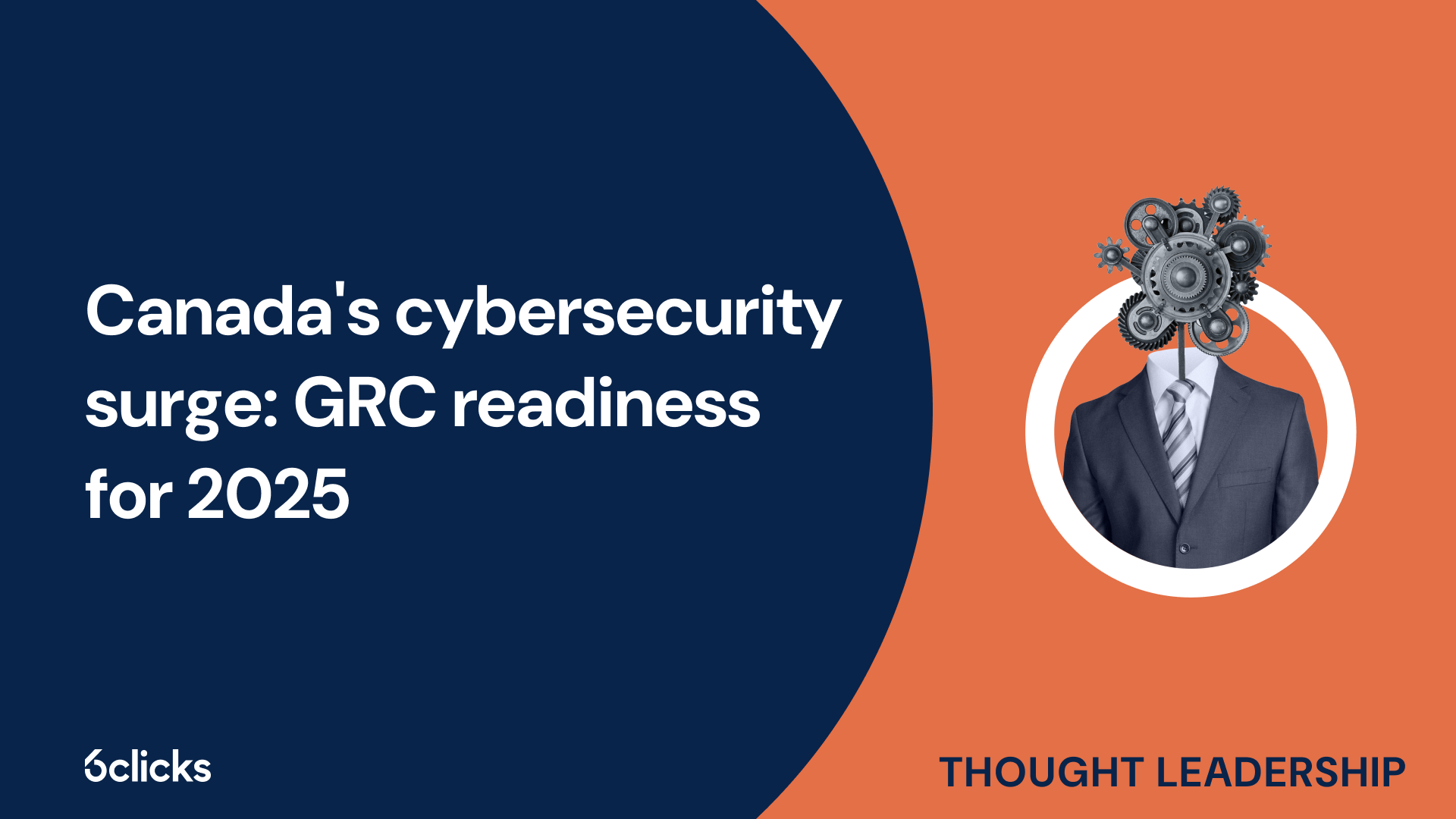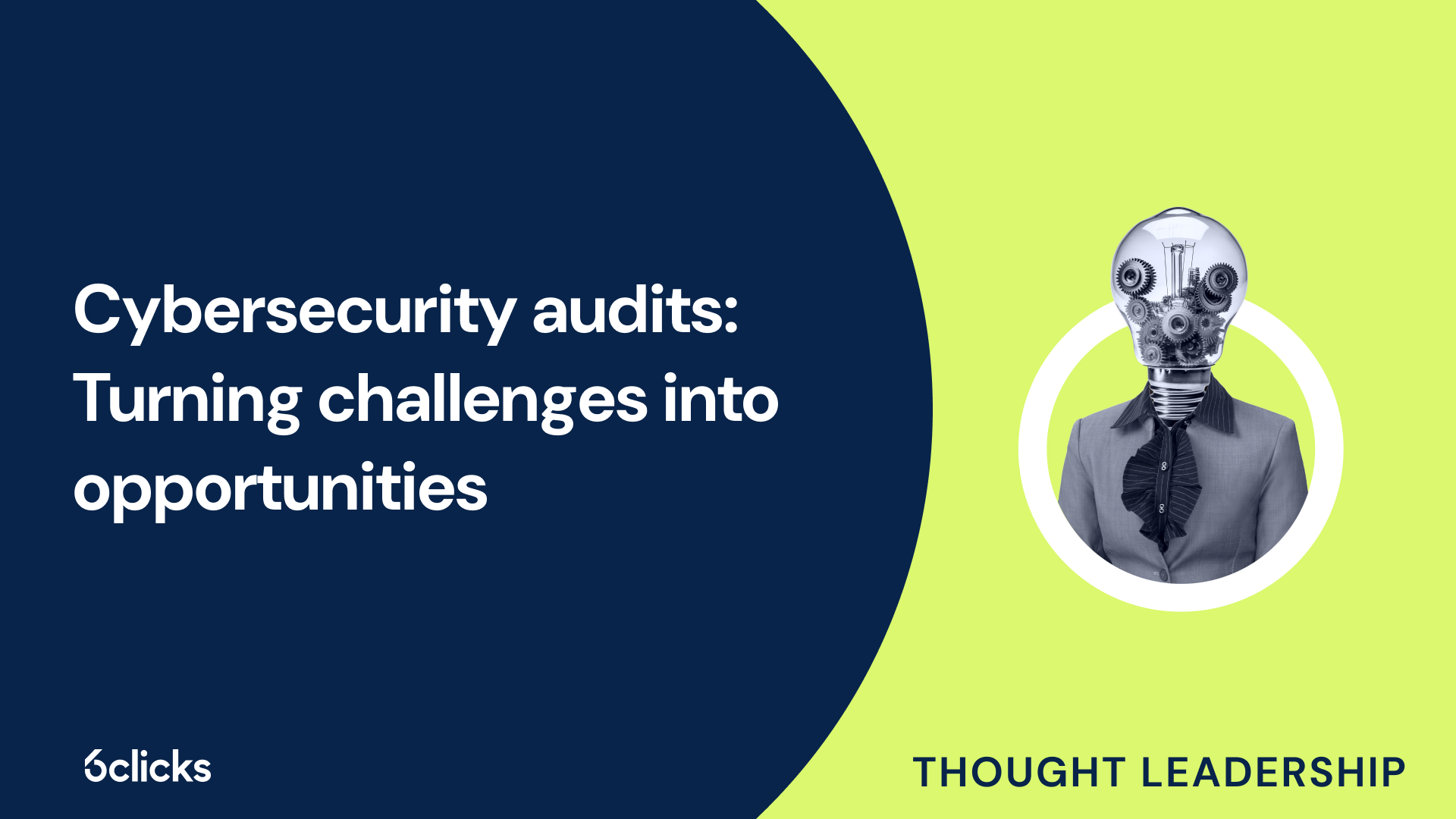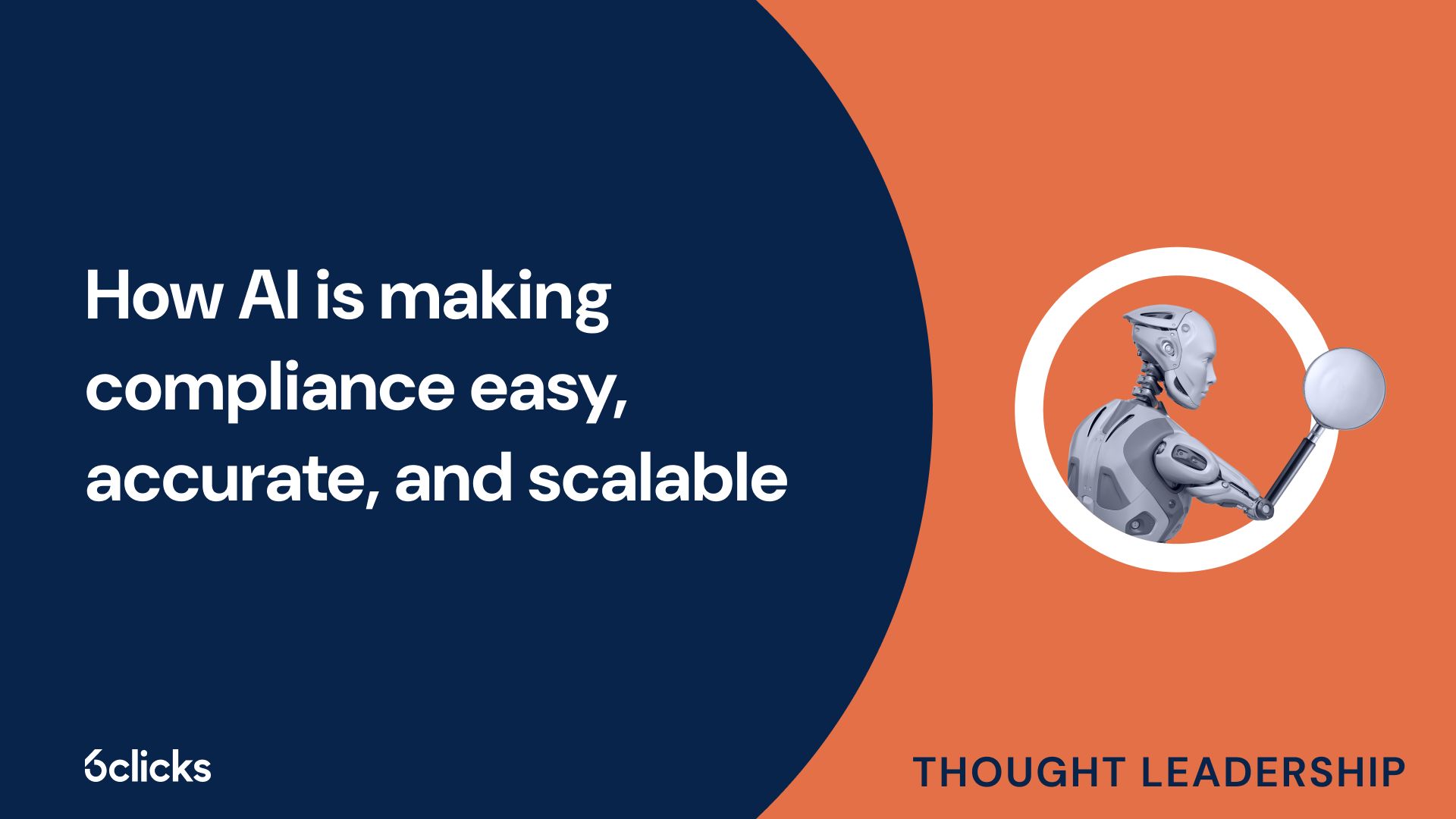Cyber resilience in 2025: Your smart guide to NIST CSF
Boost your organization's cyber resilience with this expert guide to the NIST Cybersecurity Framework. Learn to assess risk, improve security posture, and automate compliance with AI-powered tools.
-1.png?width=200&height=249&name=Group%20193%20(1)-1.png)
Cyber resilience in 2025: Your smart guide to NIST CSF
Background on NIST 800-171 compliance
NIST 800-171 refers to the set of security controls and requirements established by the National Institute of Standards and Technology (NIST) to protect Controlled Unclassified Information (CUI) within non-federal information systems. These requirements are particularly relevant for government agencies, federal contractors, and other organizations that have access to CUI. NIST 800-171 compliance is crucial for organizations seeking federal contracts or grants, as it demonstrates their ability to safeguard sensitive information in accordance with government standards. Achieving compliance involves implementing various security controls across multiple control families, such as access control, incident response, and physical security. It may also require organizations to conduct self-assessments or undergo third-party audits to evaluate their cybersecurity posture. Non-compliance with NIST 800-171 can result in the loss of contracts, grants, or even legal consequences, making it imperative for organizations to prioritize and establish a robust security plan to meet the compliance requirements.
What does NIST 800-171 compliance mean?
NIST 800-171 compliance refers to the adherence to a set of guidelines published by the U.S. National Institute of Standards and Technology (NIST) to protect controlled unclassified information (CUI) in nonfederal information systems. These guidelines are designed to establish a baseline of security controls that should be implemented to safeguard CUI from unauthorized access and disclosure.
To achieve NIST 800-171 compliance, organizations must meet four main categories of requirements: access control, awareness and training, configuration management, and incident response. These categories encompass a wide range of controls, monitoring, clear practices and procedures, and implementation of security measures.
Access control focuses on restricting access to CUI to authorized individuals and ensuring that appropriate security measures are in place to prevent unauthorized access. Awareness and training educates all employees on their roles and responsibilities in protecting CUI and the procedures to follow in the event of a security incident. Configuration management ensures that information systems are securely configured and maintained to protect CUI from vulnerabilities and threats. Incident response involves developing and implementing an incident response plan to effectively respond to and recover from security incidents.
By achieving NIST 800-171 compliance, organizations demonstrate their commitment to protecting sensitive information and reducing the risk of data breaches. It is an essential requirement for government contractors and nonfederal organizations that handle CUI, as it helps maintain the trust and confidence of federal agencies and avoid potential consequences such as loss of contracts.
Steps to becoming NIST 800-171 compliant
Achieving NIST 800-171 compliance is a crucial undertaking for organizations that handle Controlled Unclassified Information (CUI), particularly government agencies and contractors. It involves meeting a comprehensive set of security requirements to protect sensitive information from unauthorized access. The process can be complex and time-consuming, but by following these steps, organizations can steadily work towards achieving NIST 800-171 compliance. Firstly, it is essential to conduct a thorough assessment to identify any gaps between current security practices and the NIST 800-171 requirements. Once the gaps are identified, organizations must develop a remediation plan outlining the necessary actions to address the deficiencies. This plan should prioritize specific controls and include a timeline for implementation. Next, organizations should allocate sufficient resources to execute the remediation plan effectively. This may involve training employees, implementing technical solutions, and updating policies and procedures. Ongoing monitoring and testing are critical to ensure the effectiveness of implemented controls and to maintain compliance over time. Lastly, organizations should consider seeking external validation through a third-party assessment or a self-assessment against the NIST 800-171 framework. By following these steps and committing to continuous improvement, organizations can enhance their cybersecurity posture and meet the NIST 800-171 compliance requirements.
Identifying and documenting assets
Identifying and documenting assets is a crucial step in achieving NIST 800-171 compliance. This process involves the following steps:
- Asset Inventory: Begin by identifying all the assets within your organization that store or process Controlled Unclassified Information (CUI). This can include hardware devices, software applications, databases, networks, and storage systems.
- Classification: Classify each asset based on its criticality and the CUI it handles. This helps in prioritizing security measures and assigning appropriate access controls.
- Asset Documentation: Create a detailed inventory of all identified assets, including their specifications, location, owners, and assigned security controls. This documentation ensures accountability and traceability of assets.
- Access Control: Understanding the assets helps in implementing effective access control mechanisms. By documenting asset details, organizations can determine who should have access to specific assets and ensure that only authorized individuals can access them.
- Risk Assessment: Identifying and documenting assets enables a comprehensive risk assessment. By understanding the potential impact on the assets' confidentiality, integrity, and availability, organizations can prioritize their security efforts and implement appropriate safeguards.
The importance of identifying and documenting assets for access control and security purposes cannot be overstated. It ensures that organizations have a clear understanding of their digital and physical infrastructure, enabling them to implement appropriate security controls and respond effectively to security incidents. By documenting assets, organizations can identify vulnerabilities, track changes, and maintain an accurate record of their security posture, which is paramount for achieving and maintaining NIST 800-171 compliance.
Access control solutions
Access control solutions play a crucial role in ensuring that only authorized staff have access to Controlled Unclassified Information (CUI). By implementing effective access control measures, organizations can significantly enhance the security and protection of sensitive data.
One of the key access control measures is user authentication. This involves verifying the identity of individuals attempting to access CUI. By requiring users to provide unique login credentials, such as usernames and passwords, organizations can ensure that only authorized staff can gain access. Additionally, organizations can implement multi-factor authentication, which requires users to provide additional verification, such as a fingerprint scan or a one-time password, further enhancing the security of CUI.
Role-based access control is another important access control solution. This approach involves assigning specific roles or job functions to individuals within the organization. Each role is then granted appropriate access privileges based on the principle of least privilege. This means that each user is only given the minimum level of access necessary to perform their job responsibilities. By implementing role-based access control, organizations can prevent unauthorized access to CUI and minimize the risk of data breaches.
Develop an incident response plan
Developing an incident response plan is crucial for organizations to effectively respond to and manage security incidents. This plan outlines the necessary procedures and protocols to detect, analyze, contain, and restore systems following an incident. Here is a step-by-step process to develop an incident response plan:
- Prepare teams: Identify and train a dedicated incident response team responsible for handling security incidents. This team should consist of representatives from various departments, such as IT, legal, human resources, and communications.
- Detect intrusions: Implement robust monitoring and detection systems to identify potential security breaches. This includes using intrusion detection systems (IDS), log monitoring tools, and real-time security alerts to quickly identify and respond to suspicious activities.
- Analyze the situation: Once an incident is detected, the response team must assess the situation promptly. They should gather and analyze all available information, including the scope and impact of the incident, the compromised systems or data, and the potential risks to the organization.
- Contain the problem: The response team should take immediate action to contain the incident and minimize further damage. This may involve isolating affected systems, disconnecting from the network, or suspending user accounts to prevent unauthorized access.
- Restore systems: After containing the problem, the team should focus on restoring affected systems and services. This includes removing malware, restoring backups, and implementing additional security measures to prevent future incidents.
Furthermore, the incident response plan should include clear documentation and reporting processes for collaboration with relevant authorities. This ensures that incidents are properly reported and investigated, and legal or regulatory requirements are fulfilled. Regular review, testing, and updating of the incident response plan is also essential to ensure its effectiveness in addressing evolving security threats.
Implement technical solutions for cybersecurity requirements
To meet the cybersecurity requirements outlined in the NIST 800-171 compliance guidelines, organizations should implement various technical solutions. These solutions play a crucial role in enhancing information security and protecting controlled unclassified information (CUI) from unauthorized access and disclosure.
Firstly, organizations should regularly monitor their information systems to detect and mitigate potential security incidents promptly. This involves implementing intrusion detection systems and log monitoring tools to identify suspicious activities, such as unauthorized access attempts or malware infections. By closely monitoring information systems, organizations can quickly respond to security incidents and prevent potential breaches.
Additionally, organizations should physically and logically separate CUI from other internal networks. This can be achieved by implementing firewalls, access control mechanisms, and network segmentation techniques. By segregating network resources, organizations can limit access to CUI and ensure that only authorized personnel can access sensitive information. This reduces the risk of unauthorized individuals gaining access to CUI and helps prevent data breaches.
Implementing these technical solutions is crucial for meeting cybersecurity requirements and achieving NIST 800-171 compliance. Regular information monitoring and segregation of CUI from other networks significantly contribute to enhancing information security, protecting sensitive data, and mitigating the risk of unauthorized access or disclosure. By adopting these measures, organizations can confidently safeguard CUI and maintain the trust of government agencies, federal contractors, and other stakeholders.
Security alerts for nonfederal information systems and service providers
Security alerts play a crucial role in ensuring the protection of nonfederal information systems and service providers that handle controlled unclassified information (CUI). These alerts serve as early warning signs, notifying organizations of potential security threats or vulnerabilities that may compromise the confidentiality, integrity, and availability of CUI.
For nonfederal information systems, security alerts provide crucial insights into evolving cyber threats and attack methodologies. They enable organizations to proactively identify and address security vulnerabilities before they can be exploited. By promptly responding to security alerts, organizations can implement the necessary remediation measures to mitigate risks and protect CUI from unauthorized access, data breaches, or other malicious activities. This is especially important for organizations that handle sensitive government information or operate in sectors with stringent regulatory requirements.
Similarly, service providers that support nonfederal information systems must also have robust security alert mechanisms in place. These alerts allow service providers to continually monitor their systems and promptly detect any security incidents that could impact CUI. Effective security alert systems enable service providers to identify and respond to potential threats, ensuring the uninterrupted provision of services and maintaining the confidentiality of CUI.
Ultimately, security alerts are a vital component of continuous monitoring and protection for nonfederal information systems and service providers. By promptly detecting and addressing security incidents, organizations and service providers can maintain the security and integrity of CUI, safeguarding against unauthorized access and potential breaches.
Security practices for prime contractors and federal agencies
Prime contractors and federal agencies must follow specific security practices to achieve NIST 800-171 compliance and ensure the protection of controlled unclassified information (CUI) and the security of non-federal systems. These practices are crucial in preventing unauthorized access, data breaches, and other security incidents.
One important security practice is implementing robust access control measures. This involves ensuring that only authorized individuals have access to CUI, implementing strong authentication mechanisms, and regularly reviewing and updating user access privileges. By controlling who can access CUI, prime contractors and federal agencies can reduce the risk of data breaches and unauthorized disclosure.
Another essential practice is the development and maintenance of comprehensive incident response plans. These plans outline the steps to be taken in the event of a security incident, including identifying and containing the incident, mitigating the impact, and restoring systems to normal operation. Having well-defined incident response plans enables swift and effective responses, minimizing the potential damage caused by security incidents.
Regular security assessments also play a vital role in achieving NIST 800-171 compliance. By conducting periodic reviews and audits of their systems, prime contractors and federal agencies can identify security vulnerabilities, assess their cybersecurity posture, and implement appropriate remediation measures. This continuous monitoring and improvement cycle helps ensure that security controls are up to date and effective in protecting CUI.
Department of defense contract requirements
Department of Defense (DoD) contract requirements play a crucial role in the process of achieving NIST 800-171 compliance for defense contractors. These requirements are outlined in the Defense Federal Acquisition Regulation Supplement (DFARS) mandate, which applies to all non-federal organizations within the DoD's supply chain.
The DFARS mandate incorporates the NIST 800-171 standard and imposes specific security controls for protecting and securing Controlled Unclassified Information (CUI). Defense contractors are obligated to meet these requirements in order to qualify for and maintain DoD contracts.
Some key components of the DFARS mandate include implementing access controls, encrypting CUI, conducting regular security assessments, and establishing an incident response plan. Additionally, defense contractors are required to notify the DoD of any security incidents and report on their compliance with the NIST 800-171 controls.
By adhering to these contract requirements, defense contractors enhance their cybersecurity posture and mitigate the risk of sensitive information being exposed. Failure to meet these requirements can result in the loss of contracts and damage to the reputation and confidence level of the organization.
Security assessment requirements for non-federal organizations
To achieve NIST 800-171 compliance, non-federal organizations must adhere to certain security assessment requirements. These assessments are crucial for evaluating the effectiveness of security controls and identifying any vulnerabilities or weaknesses that could be exploited.
Regularly assessing security controls is important to ensure that they are functioning as intended and providing adequate protection for sensitive information. It allows organizations to identify any gaps or deficiencies in their cybersecurity measures and take the necessary steps to address them.
Creating remediation plans based on assessment findings is another key requirement. These plans outline the specific actions that will be taken to resolve identified issues and enhance the overall security posture. They serve as a roadmap for implementing necessary improvements and ensure that the organization is working towards achieving and maintaining NIST 800-171 compliance.
Furthermore, non-federal organizations need to evaluate their current cybersecurity measures in the context of the evolving threat environment. This evaluation helps in identifying any emerging threats or risks and determining whether existing controls are sufficient to mitigate them. It provides valuable insights into the effectiveness of the organization's security measures and enables proactive measures to be taken to stay ahead of potential threats.
By fulfilling these security assessment requirements, non-federal organizations can strengthen their cybersecurity defenses, protect sensitive information, and ensure compliance with NIST 800-171 standards.
Factors that affect NIST 800-171 compliance timeline
The timeline for achieving NIST 800-171 compliance can vary depending on several factors. These factors can significantly impact the amount of time and resources required to meet the necessary security requirements. Understanding these factors is crucial for organizations that aim to become compliant in a timely manner. Some of the key factors that can affect the compliance timeline include the size and complexity of the organization, the current cybersecurity posture, the availability of resources, and the level of cooperation and commitment from all stakeholders.
Firstly, the size and complexity of the organization play a significant role in determining the compliance timeline. Larger organizations with multiple departments and systems may require more time to fully implement the necessary controls and ensure compliance across all areas. Similarly, organizations with complex IT infrastructures or a wide range of non-federal information systems may face additional challenges that can extend the compliance timeline.
Secondly, the organization's current cybersecurity posture can impact the compliance timeline. If an organization already has robust security measures in place and aligns with many of the NIST 800-171 requirements, it may require less time and effort to achieve compliance compared to organizations with weaker security controls. Assessing the existing security posture helps determine the gaps that need to be addressed and allows organizations to prioritize their efforts for a more efficient compliance journey.
The availability of resources is another critical factor that affects the compliance timeline. Organizations must allocate sufficient resources, including financial, technological, and personnel, to implement the necessary security controls and support ongoing compliance activities. Adequate resources can expedite the compliance process, while limited resources can lead to delays and potentially compromise the overall security posture.
Lastly, the level of cooperation and commitment from all stakeholders within the organization can have a significant impact on the compliance timeline. Obtaining buy-in from executives, IT teams, employees, and other relevant parties is crucial for smooth and timely implementation of the required security controls. Without active participation and a shared commitment to compliance, organizations may face delays, inefficiencies, and potential gaps in meeting the NIST 800-171 requirements.
Size and complexity of system
The size and complexity of a system have a significant impact on the timeline for achieving NIST 800-171 compliance. Larger and more complex systems typically require additional time and resources to meet the necessary security requirements.
One key factor is the number of personnel involved in managing and securing the system. In larger organizations, there may be multiple departments and teams responsible for different aspects of the system. Coordinating efforts and ensuring compliance across all areas can be time-consuming and challenging.
Additionally, the scope of the system plays a role. A larger system may have a wider range of components, applications, and network infrastructure that need to be assessed and secured. This comprehensive evaluation requires more time and resources than a smaller system with fewer components.
Furthermore, the level of data sensitivity within the system affects the compliance timeline. Highly sensitive data requires stricter controls and more comprehensive security measures. Organizations must dedicate additional time to identify, classify, and protect sensitive data in compliance with NIST 800-171 requirements.
Ultimately, the size and complexity of a system pose challenges that can extend the compliance timeline. Organizations must allocate sufficient resources, plan strategically, and coordinate efforts effectively to meet the necessary security controls outlined by NIST 800-171.
Resources available to achieve compliance
There are several resources available to organizations looking to achieve NIST 800-171 compliance. One option is to handle compliance efforts in-house. This means utilizing internal IT staff and resources to assess the current IT systems, implement the required controls, and develop the necessary documentation, including the System Security Plan (SSP) and Plan-of-Action and Milestone (POA&M).
However, many organizations find it beneficial to hire a consultant to assist with the compliance process. Consultants bring expertise and experience in implementing NIST 800-171 requirements and can provide valuable insights into best practices and industry standards. They can assess the organization's current IT systems, identify any gaps or vulnerabilities, and recommend and implement the necessary controls to achieve compliance.
Hiring a consultant can also help streamline the compliance process by providing guidance and support in developing the required documentation, such as the SSP and POA&M. They can help ensure that all necessary controls are in place and that the organization's cybersecurity posture is aligned with NIST 800-171 requirements.
Understanding the regulations
Understanding the regulations and requirements of NIST 800-171 compliance is crucial for organizations doing business with the federal government. NIST 800-171 compliance is a set of security controls developed by the National Institute of Standards and Technology (NIST) to protect Controlled Unclassified Information (CUI) in non-federal systems and organizations.
Compliance with NIST 800-171 is essential for organizations as it demonstrates their commitment to cybersecurity and risk management. It helps organizations improve their cybersecurity posture by implementing technical, administrative, and physical security controls to protect sensitive information from unauthorized access, disclosure, or loss. By complying with these regulations, organizations can mitigate the risk of cybersecurity incidents and safeguard sensitive data.
Failure to comply with NIST 800-171 can have serious consequences for organizations. Penalties for non-compliance may include loss of federal contracts, reputational damage, and financial penalties. Non-compliant organizations may also face legal liabilities and jeopardize their ability to do business with the federal government in the future.
To maintain NIST 800-171 compliance, organizations can leverage tools such as Varonis Data Classification Engine, DatAdvantage, DataPrivilege, Automation Engine, and Data Transport Engine. These tools help organizations classify and protect sensitive data, manage user access and permissions, automate security processes, and ensure secure data transfer. By effectively utilizing these tools, organizations can streamline compliance efforts and maintain the necessary security controls to meet NIST 800-171 requirements.







